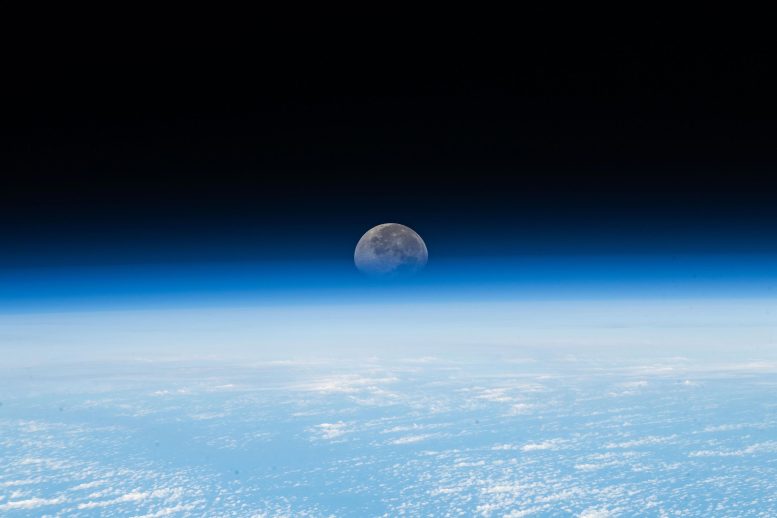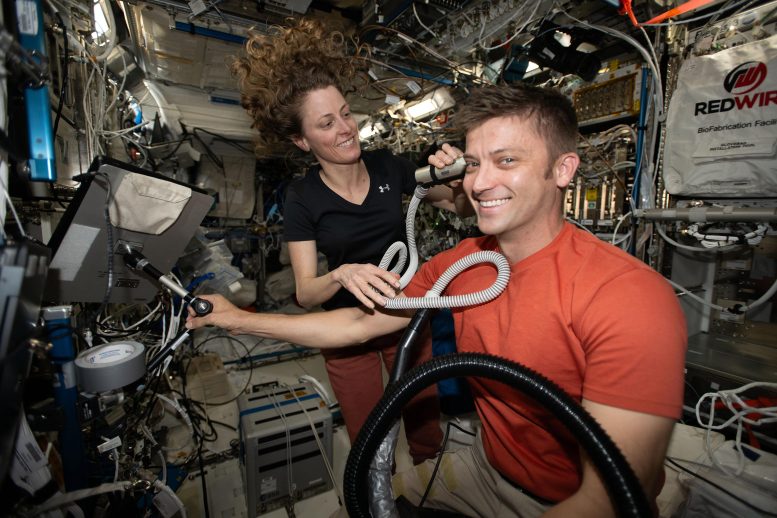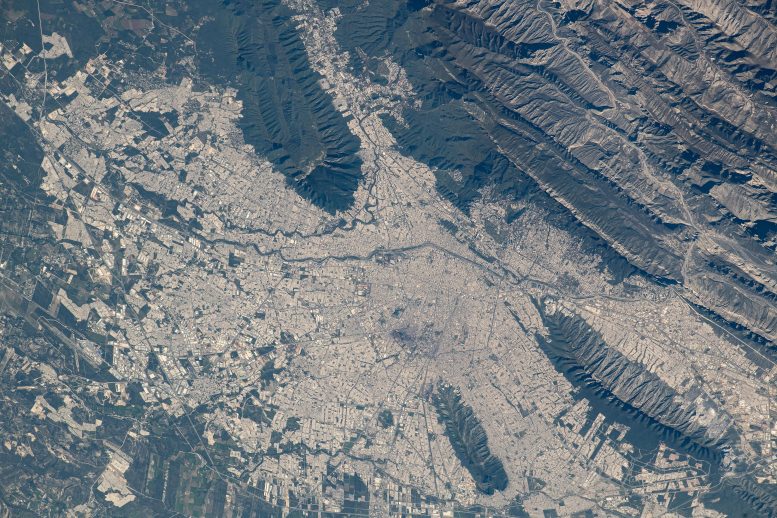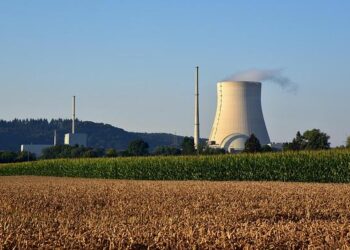
Earth’s atmosphere refract’s the Moon’s light as it sets below the horizon in this photograph from the International Space Station while orbiting 260 miles above the Pacific Ocean. Credit: NASA
Ten crewmates now reside aboard the International Space Station (ISS) after the arrival of the Soyuz MS-25 crew ship on Monday. They will live and work together the next several days before returning to a seven-member crew again and beginning the Expedition 71 mission in early April.
NASA astronaut Tracy C. Dyson arrived at the orbital lab on Monday with Roscosmos cosmonaut Oleg Novitskiy and Belarus spaceflight participant Marina Vasilevskaya. Dyson will stay in space for about six months as a member of the station crew. Novitskiy and Vasilevskaya will return to Earth with NASA astronaut Loral O’Hara on April 6.

Expedition 70 Flight Engineers Loral O’Hara and Matthew Dominick, both NASA astronauts, are pictured as Dominick receives a haircut from O’Hara who is using an electric razor with a vacuum attached that collects the loose hair. Credit: SciTechDaily.com
The trio will return to Earth inside the Soyuz MS-24 spacecraft that has been docked to the Rassvet module since September 15, 2023. O’Hara will have lived and worked on the orbital outpost for six-and-a-half months having conducted advanced space research and one spacewalk.
Dyson and her two Soyuz crewmates will be spending the next few days familiarizing themselves with space station systems. Next, they will turn their attention to a host of science and educational activities before returning home while Dyson stays in space until later this year.

Monterrey, the second largest city in Mexico, surrounded by mountains and with a population of over 1.1 million, is pictured from the International Space Station as it orbited 261 miles above. Credit: NASA
Station flight engineers Matthew Dominick, Mike Barratt, Jeanette Epps, and Alexander Grebenkin are in the first month of their mission having arrived at the station on March 5 aboard the SpaceX Dragon Endeavour. They will stay in space until mid-summer researching a wide variety of phenomena including neurodegenerative diseases, the effects of microgravity and radiation on plants, and preventing space-caused fluid shifts in astronauts.
Cosmonauts Oleg Kononenko and Nikolai Chub are due to stay in space for just over a year helping doctors understand how living long-term in microgravity affects the human body. The duo will depart the space station inside the Soyuz MS-25 spacecraft and bring home Tracy Dyson in early fall.
>>> Read full article>>>
Copyright for syndicated content belongs to the linked Source : SciTechDaily – https://scitechdaily.com/tenfold-teamwork-iss-crew-expansion-sparks-collaborative-science/































